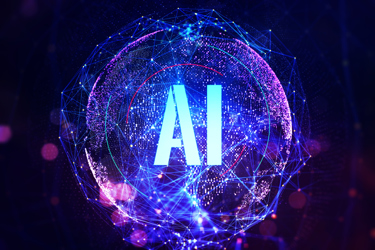Improving Customer Satisfaction And Driving Revenue With AI-Powered Self-Service Solutions
By Tony Lorentzen, Nuance

For several years, consumer expectations have been evolving as we move our lives online with greater frequency and for more reasons. When those heightened expectations collided with the pandemic, the adoption of digital technologies accelerated faster than many may have imagined. From contactless payment options and the transformation of the shopping experience (i.e., buy online, pick up curbside or in the store) to the automation of a range of routine customer service tasks, the world of retail IT is dramatically different from it was years ago.
In fact, a majority of consumers report that they have used online self-service options, and AI-powered chatbots continue to increase in popularity as a preferred customer service option through a variety of channels, from business messaging to the desktop. These changes seem to be sticking around for the long haul, making it increasingly important that retailers invest in technologies and solutions that enable a seamless online experience—one that’s not just good for the consumer, but also for the business.
Improving Customer Satisfaction With Greater Insight Into Customer Needs
AI-powered chatbots and digital messaging platforms have emerged as an ideal solution for engaging customers in ways that put them in control of their conversations with your brand. It makes sense that the retail industry has been one of the earliest adopters of AI-powered solutions, due in large part to the broad range of applicable use cases. Self-service chatbots, as one leading example, can answer consumers’ most common questions, complete a purchase transaction, and/or resolve inquiries automatically, alleviating much of the burden on contact center agents or in-store associates; allowing in-store associates more time to spend with consumers.
Gartner research recently showed that investments in customer experience and digital self-service technologies have become a top priority for organizations. They wrote specifically: “. . . most customer service leaders we surveyed view investments in analytics as an investment in improving their self-service capabilities.”
In short, they go hand-in-hand. Analytics that deliver timely, relevant insights – including information from third-party systems – can help brands get the best from their investment in AI-powered self-service solutions. Transparency into consumer needs and trends, as well as visibility into both self-service and human-assisted interactions, gives brands the insights they need to optimize shopper journeys, identify areas for improvement, and increase conversion and first-contact resolution rates.
Boosting Agent Efficiency And Effectiveness
AI-powered self-service solutions are adept at automating many of the most common interactions consumers will have with your brand, and they do so in ways that customers prefer. That said, not every interaction can be automated. When a handoff to a live agent is necessary, these technologies can seamlessly connect consumers with live, human support.
Instead of relying on manual workarounds, an AI-powered solution can ensure that customers are routed only to the agent with the specialized knowledge required to handle the customer’s request efficiently and effectively. More, the technology can serve up all the important details to the agent, saving customers from repeating themselves to reduce handle time and increase customer satisfaction. Coupled with RPA (Robotic Process Automation) these AI-powered chatbots can further minimize agent handle time and free in-store associates to spend more time with customers.
Improving Conversion Rates And Reducing Cart Abandonment
Still, cart abandonment rates hover around 70%. People bail out of their shopping experiences for a variety of reasons, whether it’s a cost consideration, account setup, or what have you. It’s a reality that is prompting retailers to rethink how they can convert those orders into sales.
Consider, for example, what could happen when a customer leaves items in their cart once shipping costs are factored into the total price. An AI-powered solution is uniquely capable of anticipating this situation and suggesting an enticing offer code to the customer. Likewise, the chatbot can present other product recommendations, relevant information, and upsell and cross-selling suggestions based on the customer’s history and current journey, helping them to make a decision.
At the end of the day, delivering reliable, consistent customer service and accurate information are essential to improving the customer experience, driving revenue through improved conversion rates, and reducing cart abandonment—whether in the self-service channel or a live, human-assisted conversation with your brand.
